(Upload on May 13 2022) [ 日本語 | English ]
Mount Usu / Sarobetsu post-mined peatland
From left: Crater basin in 1986 and 2006. Cottongrass / Daylily
[books for plant taxonomy, field equipment, field training, plot]
|
see Japanese site for detalis Basic flow
|
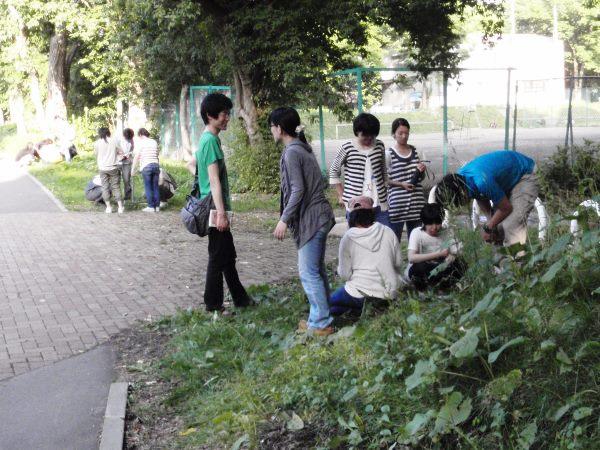
|
Forest on the banks of the Sakushu-Kotoni River (森林)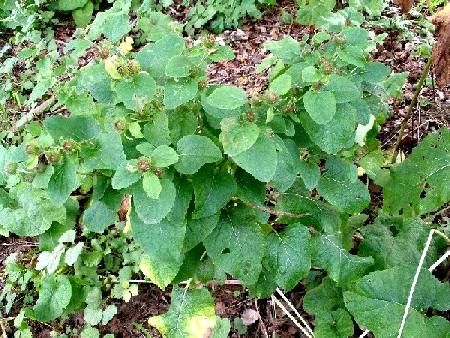 This forest on the Sakushu-Kotoni riverside is somewhat wet and semi-natural. It is composed of native trees, e.g., Ulmus davidiana var. japonica and Morus australis, which are mixed with exotic tree species such as Acer negundo and Populus spp.
This forest on the Sakushu-Kotoni riverside is somewhat wet and semi-natural. It is composed of native trees, e.g., Ulmus davidiana var. japonica and Morus australis, which are mixed with exotic tree species such as Acer negundo and Populus spp. |
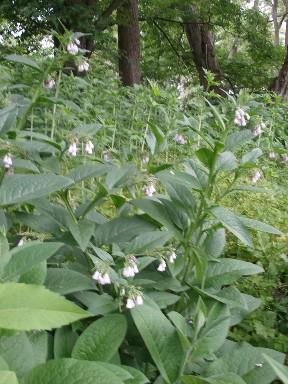 The herbaceous plants found at this site comprise native species such as Urtica plathyphylla, Cardiocrinum cordatum var. glehnii in addition to many invading exotic and escaped horticultural species, i.e., Aegopodium podagraria, Geranium robertianum, Arctium lappa, Symphytum × uplandicum.
The herbaceous plants found at this site comprise native species such as Urtica plathyphylla, Cardiocrinum cordatum var. glehnii in addition to many invading exotic and escaped horticultural species, i.e., Aegopodium podagraria, Geranium robertianum, Arctium lappa, Symphytum × uplandicum.
(2015-05-25) |
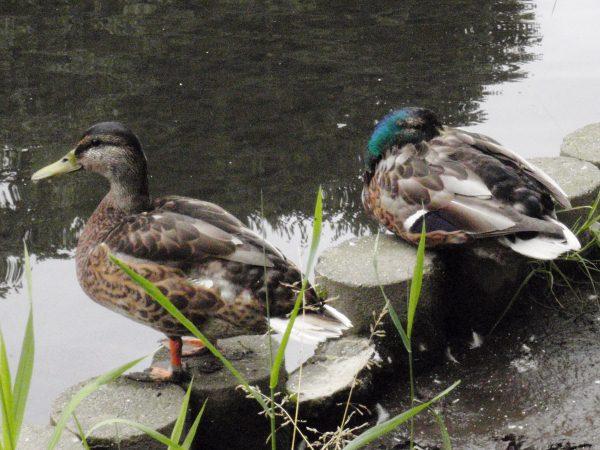
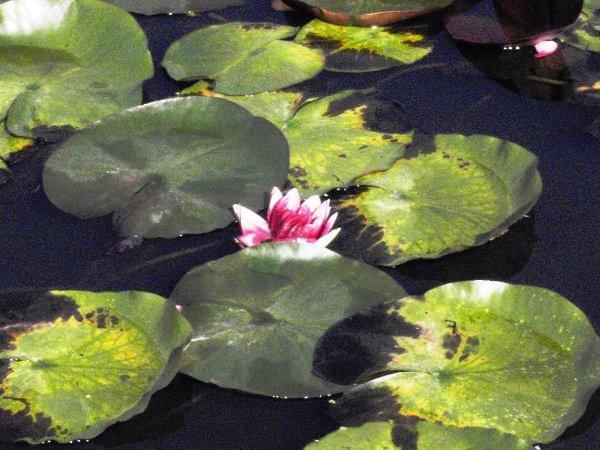
This pond along the stretch of the Sakushu-Kotoni River was named after Porf. Kazuo Ono, of Faculty of Engineering, for his endeavor to maintain it. In ancient times, this pond was surrounded by tall trees, such as Ulmus davidiana var. japonica and Phellodendron amurensis entwined with Vitis coingnetiae, as well as shrubs such as Sambucus racemosa ssp. kamtschatica.
The herbaceous species observed in this area include Lysichiton camtschatcensis in April and Nymphaea cv. plantings during July-August. Among the birds seen in this area area Parus palustris (throughout the whole year), Ficedula narcissina (during summer), and Anas platyrhynchos (from spring to fall).
|
This site with the best preserved natural environment was once called "Genshi-rin" meaning primeval forest. Representatie tree species occurring here are Cercidiphyllum japonicum, Acer pictum ssp. mono, and Ulmus davidiana var. japonica. The herbaceous vegetation growing on the wood floor is characterized by Corydalis ambigua, Gagea lutea, Trillium camschatcense - the symbol mark of Hokkaido University, and Anemone flaccida. The following birds can be commonly observed in this area: Parus palustris and Dendrocopos major all year round; Sturnus philippensis during summer, and Turdus naumanni during the winter monthds. (2014-10-07) ⇒ the forest structure recorded by belt transect in 1984Summary: The present paper, based on a study made in 1988, examines the types of woods and trees on the Sapporo campus of Hokkaido University. These woods are important as remnants of pre-Meiji era (pre-development times of Hokkaido) forests and have a very important position as a large-scale green space in Sapporo, the largest city north of Tokyo. |
1. Tree species except shrubs for garden greening comprised 30 families, 49 genera, and 92 species. The percentage of deciduous broad-leaved tree species on the campus was very high; 78.3%. The percentage of tree species introduced from foreign countries including deciduous trees was 31.5%. The percentage of spontaneous tree species was 50.0% of the broad-leaved trees found in Hokkaido, and 29.3% of the total species on the campus. 2. The number of individuals over 6 cm in DBH (diameter at breast height) was 6,670. The numerical proportion of major species individuals was as follows: Ulmus davidiana var. japonica 21.2%, Populus spp. (Poplar) 9..6%, Betula platyphylla var. japonica 9.4%, Taxus cuspidata 8.5%, Fraxinus mandshurica 5.1%. The percentage of spontaneous tree species was approximately 45 %. 3. The location and size of the tallest tree individuals are clarified in this paper and the tree-lined avenues are outlined. 4. The species composition and regeneration of 9 wood stands (Sl-S9) over 25 m × 25 m on the campus were investigated. 5. The physiognomy of woods on the campus has been changed by various anthropogenic agencies such as disturbance of surface soil, lowering of water level, felling, and decline of wooded areas. In order to preserve such large-scale remnant spaces in Sapporo, long-term, well-planned management of the environment should be carried out based on scientific research. (Haruki et al. 1989 J/E) |
|
This site has somewhat wet forest composed of tall trees such as Alnus japonica and Fraxinus mandhurica var. japonica, low trees or shrubs such as Morus australis, and climbers like Euonymus fortune. In early spring, the forest floor is covered by many yellow flowers of Gagea lutea, but tall herbaceous Heracleum dulce and alien Rudbeckia laciniata growing in clumps are remarkable in summer. |
Among the native birds, Parus palustris, Parus major, Sitta europaea, Dendrocopos major are seen throughout the year, whereas one can observe also Cyanoptila cyanomelana and Emberiza spodocephala during the summer time.
(2020-03-31) |
|
The grove in this area has somewhat moist vegetation predominated by trees like Ulmus davidiana var. japonica, Fraxinus mandshurica var. japonica, and Juglans mandshurica var. cordiformis. In early spring, the forest floor is covered by many yellow flowers of Gagea lutea, but alien Ranunculus acris are remarkable in early summer. Birds commonly found here all year around are: Parus palustris, Parus major, Sitta europaea, Parus varius, Dendrocopos major, etc. Also, Anas platyrhynchos is seen from spring to fall. (2019-05-03) |

|
Satumon Potteries Originated from Haji Ware
|
A 2000-yrs Old Camp Site (2000年前のキャンプ地)(Locality: Guest-house <Gesuto-hausu>, K-39 site)
Preserved pit dwellings (Locallity: Stable <Baba>, K-435 site)
|
Gatehouse
Year of construction: 1904 |
Practical room for meat product manufacturing, Faculty of Agriculture (Tannery Plant)Year of construction: 1937Structure type: brick Designed by: Building and Repairs Section of the Hokkaido University Animal husbandry was introduced into the curriculum of the Department of Agriculture in 1900, while the Stock Raising Section was set up in 1907. The meat product laboratory, a section of the Animal Husbandry Department, was established in 1937. Through research on meat and meat products, it laid the foundation for development of the meat industry in Hokkaido. The building shown here was built on December 9, 1937, while its attic was extended the following year. It was used from 1987 to 2009 as a leather factory. The clinker bricks, produced by burning at temperatures higher than those for ordinary bricks, are shown on the spandrel wall under the window. And, the upper part made of bricks is finished with mortar. Former Reading and Stackroom of Sapporo Agricultural College旧札幌農学校 図書館読書室・書庫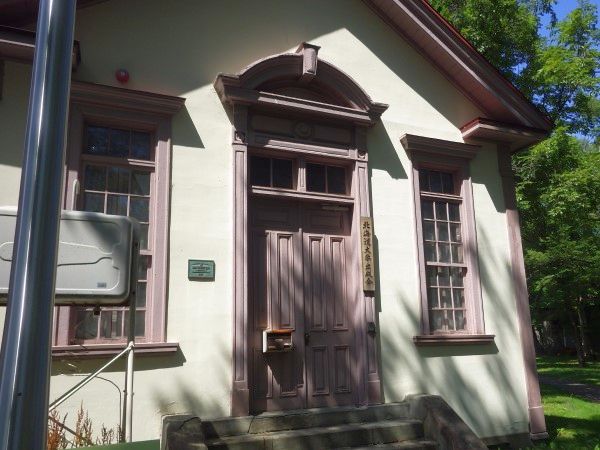 Year of construction: 1902
Year of construction: 1902Structure type: wooden (former reading room and former laboratory), brick (former stack room) Designed by: Sapporo Branch of Construction Section of the Education Ministry (Seiichiro Chujo) Constructor: Itoh & Company (Heiji Abe) Designation: National registered cultural tangible property This building was first constructed a year before the campus moved to present location, and subsequently extended several times. The Agricultural Chemistry Department located in the neighboring west was partially shifted to the frontal part of this building, and the old entrance door and the surrounding part were removed in 1952. The newly added part, the original T-shaped reading room, and the brick stack on the back are still intact. The original roof was covered by tiles. Light grayish red colored pilasters and frames on white wall accentuate the building. This building was used as the central library of Hokkaido University until 1965, and also as the library of Department of Agriculture until 1986. Former Specimen Room of the Agriculture Department of Hokkaido Imperial University旧北海道帝国大学農学部昆虫学標本室Year of construction: 1927Structure type: stone and reinforced concrete Designed by: building and repairs section of Hokkaido Imperial University (Otoji Masutani) 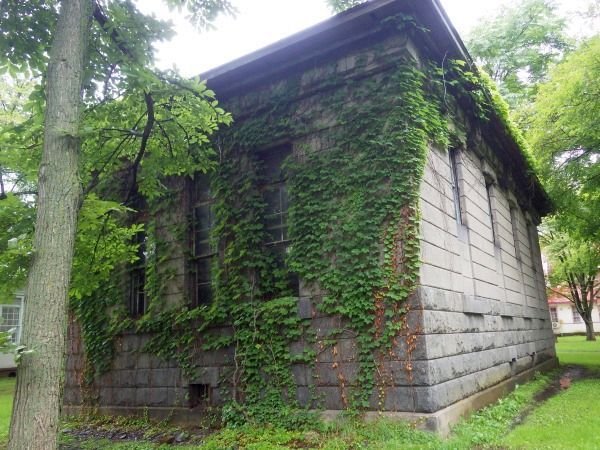 The first Entomology Laboratory in Japan was opened in Sapporo Agricultural College in 1896. Professor Shonen Matsumura, who took charge of the laboratory, filed a petition for the construction of a specimen room over many years, and as a result, the construction of this fireproof building was materialized. This building has a stone wall while reinforced concrete is used in the floor and ceiling. The windows are equipped with fire shutters. In the past, it was connected with other facilities such as he lecture hall in the south and the insect breeding room. Dr. Matsumura, who stayed in the laboratory since his graduation of Sapporo Agricultural College in 1895 and became professor in 1902, was the person that laid the foundation of entomology in Japan.
The first Entomology Laboratory in Japan was opened in Sapporo Agricultural College in 1896. Professor Shonen Matsumura, who took charge of the laboratory, filed a petition for the construction of a specimen room over many years, and as a result, the construction of this fireproof building was materialized. This building has a stone wall while reinforced concrete is used in the floor and ceiling. The windows are equipped with fire shutters. In the past, it was connected with other facilities such as he lecture hall in the south and the insect breeding room. Dr. Matsumura, who stayed in the laboratory since his graduation of Sapporo Agricultural College in 1895 and became professor in 1902, was the person that laid the foundation of entomology in Japan.
Glassroom and wire net room for the crops
|
| Wheat genetics entered a fresh phase with SAKAMURA’s discovery (1918) that the species might have 14, 28 or 42 chromosomes (diploid) and with KIHARA’s work on the cytology of hybrids between species with different numbers of chromosomes. A.E. WATKINS. 1930 |
|
(Former School Building of Preparatory Course of Hokkaido Imperial University) Year of construction: 1935 (period I), 1937 (period II) Structure type: reinforced concrete Designed by: Building and Repairs Section, Hokkaido Imperial University ___________(Tohkichi Ochifuji, chief of the section) Constructor: Higashiyama (period I), Okitsu & Company (period II) Because of aging and deterioration of the former Building of Preparatory Course, this new building was reconstructed with reinforced concrete. The western part was built during the 1st period. After the Second World War, the building served as a school of the Law and Literature Faculty (established in 1947) and others, and since 1966 it has been used as the Administration Bureau. Exterior wall was finished with scratched face tiles same as those used in the main buildings of the Faculty of Science and the Faculty of Agriculture. However, the building has moderate decoration due to its construction during the war. The porch and eaves were attached to the main entrance in 1977 |
2018.9.8 |
|
This elm tree, whose scientific name is Ulmus davidiana var. japonica, was planted in the spring of 1905 as a gift from Mary P. E. Nitobe (Japanese name: Mari Nitobe), wife of Inazo Nitobe.
Mary was the daughter of the wealthy Elkinton family of Philadelphia, whom Inazo met while studying in the U.S. when he was 24 years old. Inazo was appointed as an assistant professor at Sapporo Agricultural College in the following year but went to Germany to study agricultural policy. Four years later in 1891, when he finished his studies, Inazo married Mary at the age of 29. Mary then came to Japan with Inazo who was assigned to Sapporo Agricultural College and spent seven years in Sapporo. In 1894, Inazo opened an evening school named “En-yu Night School,” which had been his dream for many years and is said to have been funded by the inheritance sent from Mary's parents' estate. While the couple devoted themselves to helping their students gain academic knowledge, their health deteriorated due to the strenuous work of teaching simultaneously at four different schools. In 1897, the couple moved to California to recuperate, where the weather was warmer and milder. According to the University Archives, Mary cared deeply for the students and Sapporo Agricultural College even after leaving Sapporo and donated 24 elm trees to celebrate the construction of the new school building. Under the meticulous care of Professor Kingo Miyabe, the trees were planted as roadside trees in various locations on campus. The five trees planted at that time near the main gate (two in front of the Administration Bureau and three across the street in the south) are now approximately 100 years old. "November 2002" |
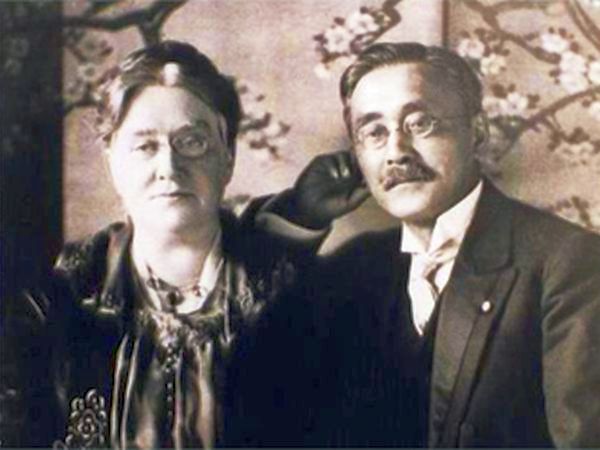 Ulmus davidiana var. japonica Nakai (ハルニレ)
Ulmus davidiana var. japonica Nakai (ハルニレ)Distribution: Throughout Japan, Sakhalin, Kuril Islands, Korean Peninsula, Northern China, Eastern Siberia, etc. The species is representative of the northern part of Japan and large-sized trees are found in Hokkaido. Its flowers bloom in the spring. The wood is hard and used for furniture, flooring, or other purposes. 
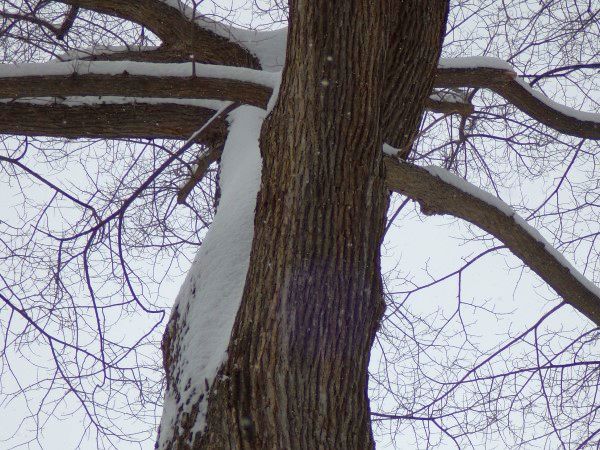 At the main gate of HU on February 17 2020. |